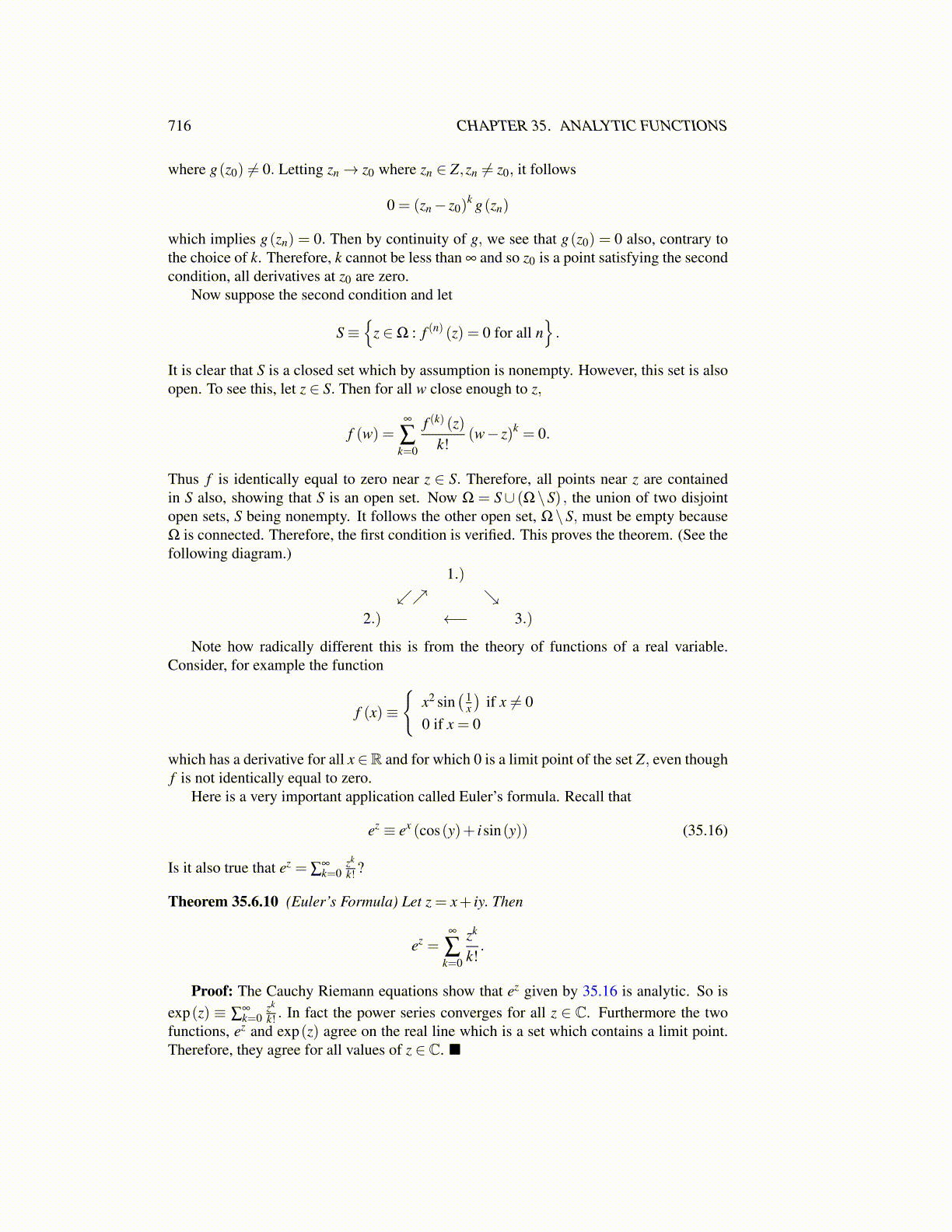
716 CHAPTER 35. ANALYTIC FUNCTIONS
where g(z0) ̸= 0. Letting zn→ z0 where zn ∈ Z,zn ̸= z0, it follows
0 = (zn− z0)k g(zn)
which implies g(zn) = 0. Then by continuity of g, we see that g(z0) = 0 also, contrary tothe choice of k. Therefore, k cannot be less than ∞ and so z0 is a point satisfying the secondcondition, all derivatives at z0 are zero.
Now suppose the second condition and let
S≡{
z ∈Ω : f (n) (z) = 0 for all n}.
It is clear that S is a closed set which by assumption is nonempty. However, this set is alsoopen. To see this, let z ∈ S. Then for all w close enough to z,
f (w) =∞
∑k=0
f (k) (z)k!
(w− z)k = 0.
Thus f is identically equal to zero near z ∈ S. Therefore, all points near z are containedin S also, showing that S is an open set. Now Ω = S∪ (Ω\S) , the union of two disjointopen sets, S being nonempty. It follows the other open set, Ω \ S, must be empty becauseΩ is connected. Therefore, the first condition is verified. This proves the theorem. (See thefollowing diagram.)
1.)↙↗ ↘
2.) ←− 3.)
Note how radically different this is from the theory of functions of a real variable.Consider, for example the function
f (x)≡
{x2 sin
( 1x
)if x ̸= 0
0 if x = 0
which has a derivative for all x∈R and for which 0 is a limit point of the set Z, even thoughf is not identically equal to zero.
Here is a very important application called Euler’s formula. Recall that
ez ≡ ex (cos(y)+ isin(y)) (35.16)
Is it also true that ez = ∑∞k=0
zk
k! ?
Theorem 35.6.10 (Euler’s Formula) Let z = x+ iy. Then
ez =∞
∑k=0
zk
k!.
Proof: The Cauchy Riemann equations show that ez given by 35.16 is analytic. So isexp(z) ≡ ∑
∞k=0
zk
k! . In fact the power series converges for all z ∈ C. Furthermore the twofunctions, ez and exp(z) agree on the real line which is a set which contains a limit point.Therefore, they agree for all values of z ∈ C. ■